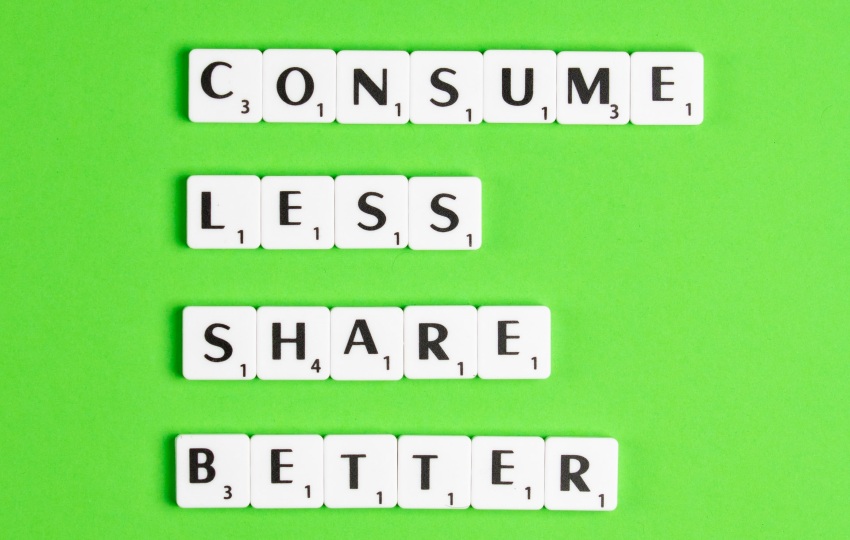Similar to water and oxygen, food is something that, as humans, we need to survive. Thankfully, the natural environment provides for all three. But to cover our needs for food, we need to systematically cultivate fields to grow and transport our food to cover the current needs. This whole process of producing, transporting, and eventually consuming food constitutes the food supply chain. But as vital as food supply chains may be for the survival of our species, they could also signify our doom.
Due to the critical importance of food, food supply chains are vast and “dirty,” with severe social, environmental, and health consequences. However, the application of circular economy principles could transform food supply chains and, at the same time, provide social and ecological benefits.
This article will go deeper into analyzing the idea of the circular economy. Additionally, it will mention a few of the social benefits that the circular economy in our food supply chains offers.
What is the circular economy?
The circular economy comes with advantages and social and is the necessary answer to the existing linear economic model. that comes with advantages and social benefits. Our current model is based on the take-make-consume-throw-away pattern that has worked for us for many years.
But with the increase of the global population and the demand for goods and services, this economic model is not sustainable in the long run as there is a growing demand for resources that are faster depleted than replenished.
One of the main problems of this linear system is that of waste management. Apart from the growing capacity of landfills and their numbers to dispose of waste, a large percent of the waste ending there are valuable resources that could be reused or recycled.
The circular economy is the new proposed model for the production and consumption of goods sustainably. At the heart of circularity is the idea of producing and consuming goods in a closed loop to reduce waste to a minimum and extend their product life cycle. To achieve this, the circular economy follows certain principles:
- Designing out waste and pollution,
- keeping products and materials in use,
- regenerating natural systems.

The history of circular economy
The idea of the circular economy is not new. It first appeared back in 1966 in the book by Kenneth E. Boulding, explaining why we should adopt a “cyclical” production system. It was this time that the first seed for the notion of circularity was planted in academic thought. As the years passed, this idea evolved into coinage of the term “circular economy” in 1988 in the “The Economics of Natural Resources.”
In the European Union, the first introduction to the vision for a European circular economy was in 2014. It led to the adoption of the New Circular Economy Action Plan in 2020, one of the main building blocks of the European Green Deal.
The application of circular economy to the food supply chain
The concept of circularity applies to all kinds of products without excluding the food supply chain, which is in dire need of a revamp. We need to find innovative ways to reduce food waste, captivate value from the organic waste ending up in landfills, and dramatically reduce plastic food packaging.
The application of circular economy principles can make the food supply chain more sustainable in various ways. For once, they can remove decaying organic waste from the environment, responsible for greenhouse gas emissions like Methane and CO2, which are responsible for trapping heat in the atmosphere. We can also collect and treat landfill gas to cover our energy needs by the following circularity.
Finally, reducing the amount of packaging ending up in landfills contributes to a more sustainable and healthier environment. As only a small percent of plastics is recyclable and is designed for a single-use only, that means that our plastic trash will long outlive us.
Plastic in the environment is responsible for biodiversity loss as it is responsible for many animal deaths. Furthermore, the plastic slowly degrades into microplastic, polluting the soil as well as aquatic ecosystems. Finally, much of that packaging comes with printed labels whose toxic ink and dyes are leaching into the groundwater and soil.

The social benefits of the circular economy
The linear economic model served our economies for so long, leading to the current levels of prosperity. Here comes the time that the world needs to take important decisions concerning the global production systems and how the economies work if we want to live sustainably. There is a reason that we are the dominant species here on earth, and if there is something that we know to do well is to overcome obstacles. But this time, the opportunity to transform into a circular economy comes with added social benefits.
1. Health and ecosystem balance
Talking about the social benefits of the circular economy, it is essential to mention the health and environmental benefits that come with it. In a circular farming system, much attention is given to regenerative food production that focuses on producing high-quality food and improving the surrounding natural environment. For that reason, regenerative farmers use organic fertilizers and techniques like rotational grazing or crop rotation to improve the fertility of the soil.
2. Food security
The circularity principles can help increase the consumers’ access to fresh food and, therefore, food security. With the current system, food products travel from one side of the world to the other to reach the consumer’s plate. Of course, a food system like this is terrible for the environment and prone to disruptions like the Covid-19 pandemic. To avoid these inconveniences, the circular economy prioritizes the consumption of locally produced and consumed food.
3. Local communities support
The majority of the food we eat comes mostly from smallholder farms despite the growing trend of the industrialization of food production. However, going deeper into the statistics, it looks like that these smaller farms are more resource-efficient than industrial farms, something critical in the circular economy. Essentially, turning our focus towards local food production will mean empowering local communities and supporting the local smallholder farms. Finally, it can also help to fight the serious problem of rural area depopulation.
4. Jobs creation
Another social benefit of the circular economy is that it can contribute to positive GDP growth and jobs creation. According to the New Circular Economy Action Plan, the application of circular economy measures in Europe could increase the EU’s GDP by 0.5% by 2030 and create 700.000 new jobs. Employment is critical for the social cohesion of societies, and the circular economy offers the opportunity to add an ethical dimension to work.
5. Innovation boost
A final social benefit of the circular economy is that it offers the world the opportunity to innovate and be creative. In the following years, there will be a large innovation drive across sectors to redesign materials and processes to make them more circular. According to McKinsey & Company, the circular economy could spark innovation even in not typically considered innovative sectors.
Conclusion
Making the transition towards a circular economy will not be easy. Still, our knowledge and tools will make it more attainable. Certainly, we can’t just jump straight to a new production model as we first need to come up with innovative and applicable ideas of circularity tailored to each sector. Creating a circular world is not a matter of if; it’s a matter of when. The principles that circularity entails will allow us to maintain our living standards while safeguarding the sustainability of our planet. In reality, considering all the social and environmental benefits of a circular economy, it is mostly about living smart than living differently.
TRAIN CE Food Project | Empowering the New Generation of Entrepreneurs with Circular Economy
Europe’s economic and jobs growth heavily depend on the EU’s ability to support the growth of enterprises. Entrepreneurship leads to the creation of new companies, opens new markets, and nurtures new skills.
Thus, Europe is actively promoting entrepreneurship at all levels by supporting the creation of new or the expansion of current businesses. Currently, the circular economy offers excellent opportunities for growth, innovation, and job creation, and this project seeks to create a new generation of entrepreneurs empowered by the Circular economy principles.
Train CE Food is a European project under the Growth EU program whose core objective was to help young people acquire innovative and specialized competencies in entrepreneurship and the circular economy.
The project aimed to develop more efficient cooperative solutions and business models in circular economy and food supply chains. The partnership of Train CE Food achieved this via open online learning, workshops, and in-depth remote coaching. Finally, the project established a new network of upskilling and personalized learning opportunities to implement business models and cooperatives in the circular economy.
To learn more about the “Train CE Food” EU project you can visit the project’s official website.
If you are interested in EU funding collaboration opportunities on Sustainable Development projects with Institute of Entrepreneurship Development (iED), do not hesitate to get in touch.

